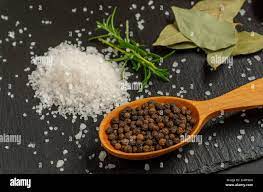When it comes to the world of seasoning, few combinations are as https://pepperandsalt.kz/pryanue-travi/ universally recognized and cherished as pepper and salt. These two humble ingredients, often paired together on dinner tables across the globe, have played an essential role in cooking for centuries, transforming bland dishes into flavorful experiences. But what makes pepper and salt such a perfect pair? What is their history, and how have they earned their spot as the cornerstones of seasoning?
A Brief History of Salt
Salt, often referred to as “white gold,” is one of the oldest known seasonings and preservatives. Its history dates back thousands of years. Ancient civilizations like the Egyptians, Chinese, and Romans prized salt for its ability to preserve food and enhance flavors. The Roman Empire even used salt as a form of currency, which highlights its immense value. Salt’s importance wasn’t limited to food—it was also essential in the preservation of hides, fish, and even for medicinal purposes.
Throughout history, the acquisition of salt played a significant role in the development of trade routes and empires. In fact, the term “salary” is derived from the Latin word salarium, which refers to payments made to Roman soldiers in salt. It was not just a seasoning, but a symbol of wealth and sustenance.
The Journey of Pepper
Pepper, known as the “king of spices,” has a similarly fascinating history. Native to the tropical forests of South India, it has been used in cooking for over 4,000 years. Like salt, pepper was so highly valued that it became a major commodity in ancient trade. By the time of the Roman Empire, it was already in high demand, leading to the creation of spice routes that spanned across Asia, the Middle East, and Europe. The allure of pepper spurred explorers like Vasco da Gama to seek new routes to India, ultimately shaping the course of history during the Age of Exploration.
Pepper was prized not only for its flavor but for its medicinal properties as well. It was believed to aid in digestion, improve circulation, and even fight infections. Over time, pepper evolved into one of the most popular spices worldwide, from savory dishes to sweet desserts, earning its rightful place on every dining table.
The Perfect Pair
While both salt and pepper have distinct histories, what truly sets them apart is their unique ability to complement one another. Salt enhances sweetness, balances acidity, and amplifies the natural flavors of food. It creates harmony by heightening the taste of every dish it touches. Pepper, on the other hand, adds complexity with its sharp, pungent bite and aroma. Together, they form a balance between salty and spicy, creating a well-rounded taste profile.
Interestingly, the combination of salt and pepper is so ingrained in culinary culture that it often becomes the default seasoning for almost any dish, from soups and meats to salads and eggs. Even in modern times, chefs rely on the versatility of this dynamic duo, showcasing how something as simple as pepper and salt can elevate a dish from ordinary to extraordinary.
Salt and Pepper in Modern Cuisine
The role of salt and pepper is far from static; it continues to evolve in contemporary cuisine. The variety of salts available today—such as Himalayan pink salt, sea salt, and fleur de sel—bring their own unique mineral flavors, making the humble grain of salt even more sophisticated. Similarly, the diversity of peppers, from black and white peppercorns to chili pepper varieties like jalapeño, cayenne, and habanero, opens up a world of flavor profiles that can complement diverse cuisines.
In addition to traditional uses, salt and pepper have made their way into unexpected realms, such as beverages. For instance, a pinch of salt is sometimes added to coffee or cocktails to enhance the drink’s flavor complexity, while pepper is incorporated into spicy margaritas or Bloody Marys.
Beyond the Kitchen: The Cultural Significance of Salt and Pepper
Salt and pepper’s influence is not confined to food. The pairing of these two seasonings holds symbolic significance in various cultures. In many traditions, couples are gifted with salt and pepper shakers at weddings as symbols of the relationship’s enduring balance and flavor. Salt is often associated with hospitality, and offering guests food seasoned with both salt and pepper symbolizes warmth and care. This sentiment is reflected in the phrase “a pinch of salt” as a metaphor for adding a touch of something special to life.
In pop culture, salt and pepper are often depicted together, underscoring their inseparable bond. From the famous song “Salt-N-Pepa” to the well-known “salt and pepper shaker” image, they represent a perfect pairing that adds zest to both food and life.
Conclusion
Pepper and salt may seem simple, but their cultural and culinary impact cannot be overstated. As some of the oldest and most cherished seasonings, they’ve transcended time and geography, remaining indispensable in kitchens across the world. Whether used in their purest forms or in their more exotic variations, they continue to shape the way we experience flavor. Ultimately, it’s their timeless balance of enhancement and complexity that has made them a staple, a pairing as enduring and satisfying as the flavors they help create.

